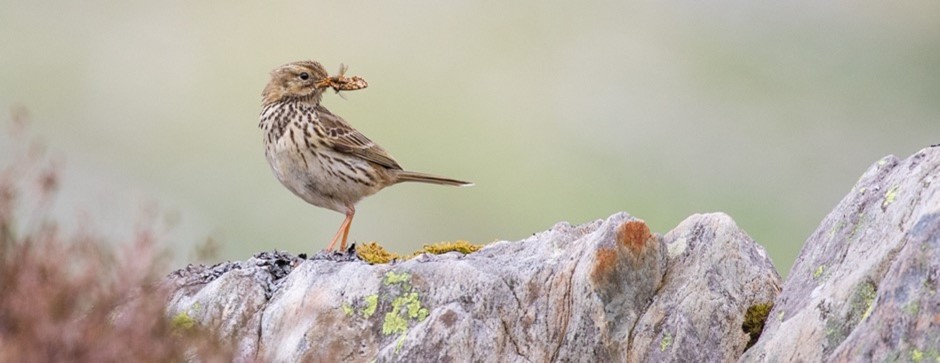In spring 2020, a number of popular sites across North Wales were closed to the public following the implementation of a nation-wide lockdown in response to the health crisis of the Coronavirus. Many areas were entirely closed off to the general public, whilst other areas experienced greatly reduced visitation due to the nature of lockdown regulations and its limits to travel.
To evaluate how wildlife was responding to this exceptional period in the Snowdonia National Park and across north-west Wales, a series of biodiversity surveys by the environmentalist Ben Porter were commissioned by Natural Resources Wales, the National Trust and the Snowdonia National Park Authority in June 2020.
The three years of contrasting visitor numbers in the area provide a good opportunity for comparing the data from these surveys and assessing what effects there might be on the wildlife, levels of littering and general impacts on the landscape within the National Park.
The third report highlights some key findings in the way nature reacts to an increase in visitor numbers to popular sites.
Reduced abundance and diversity of birdlife was a running theme throughout the report in many of the sites including the uplands, woodlands and coastal areas. The number of breeding birds and species recorded were lower in all of the sites for a variety of reasons such as an increase in visitor numbers in the uplands, and disturbance from recreational motor crafts and paddleboards in coastal areas.
Erosion was also a key feature of the report following two extremely busy visitor seasons in a row, leading to a concentration of walkers eroding footpaths such as Cwm Llan on the Watkin Path for Yr Wyddfa (Snowdon), coastal vegetation being trampled on in Ynys Llanddwyn and a braided series of mountainside paths being created on Y Garn in Cwm Idwal.
One positive sign was a reduction in litter compared to the spike in 2021. However, the slightly lower totals in 2022 compared to 2021 is likely due to the relentless work of groups such as Caru Eryri*, the National Park Authority’s Warden and Volunteer Warden teams, and other groups such as Trash Free Trails.
Ben Porter, Ecologist and Author of the Report said:
‘It is clear that there are big challenges facing Eryri and its wildlife, from widespread littering issues to increasingly severe weather events amidst an escalating climate crisis, threatening some of the unique species that exist here. I hope that the results from these surveys will help to reinforce the work of those managing the National Park in balancing the needs of local people and visitors, whilst ensuring that we can see the natural heritage of this spectacular area of Wales flourish into the future.’
The Snowdonia National Park Authority, The National Trust and Natural Resources Wales are working together on numerous projects and strategies to reduce the effect of visitor numbers on our landscapes and biodiversity.
They include a long-term sustainable approach to tourism and transport in the region which will be an environmentally friendly way to visit north west Wales, and in turn lessen the impact on our wildlife and habitats.
The partners involved in the report monitor visitor numbers with footpath counters at some of the busier sites and trails in the area. Staff and volunteers on the ground from the authorities can then raise awareness and offer advice on issues such as dogs around nesting birds in Spring, littering and other ways of minimising their impact and carbon footprint during their time here.


